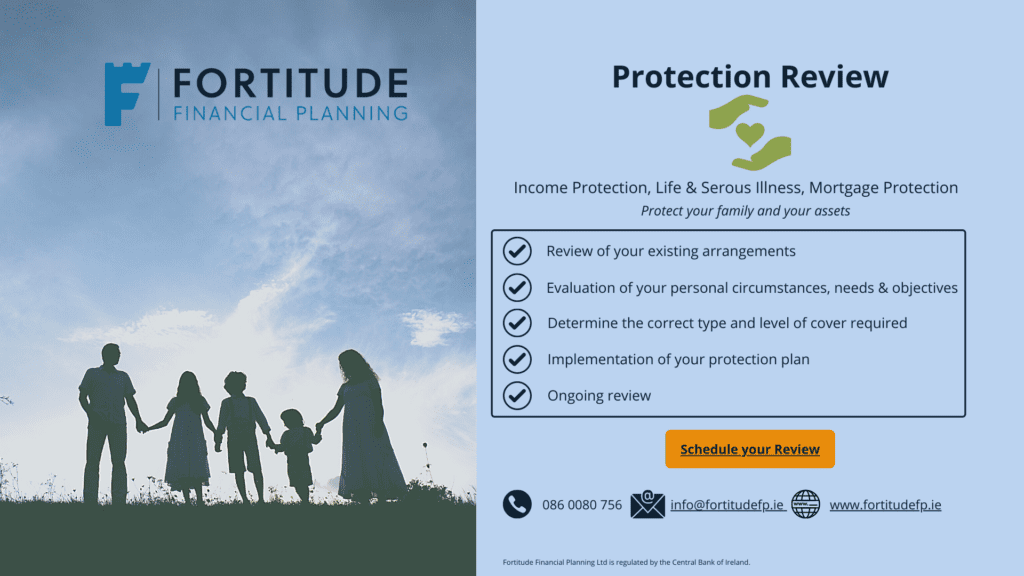Young adults don’t typically think about life insurance.
After all, in your 20’s, 30’s and early 40’s, you probably feel like your entire life is endlessly stretched out ahead of you.
In your 20’s especially you feel bulletproof!
You have all the time in the world to make big decisions about your life.
Why think about something you might not need for hopefully many many years?
This is a huge mistake.
Life insurance is more valuable and necessary than you might want to think about.
Let’s explore some key details about life insurance.
Why you should have this coverage, and look into getting this important coverage in your 20’s, 30’s and early 40’s.
What Is Life Insurance?
Life insurance is meant to help take care of your dependents after you have passed away.
It can be used for a variety of expenses such as funeral costs, to pay down debt, clear your mortgage, as a livable income for a spouse as they adjust to life without you, and can even go towards children’s education.
The amount of coverage you need is variable depending on how much your dependents will need your income if you pass on.
This is definitely a conversation married couples should have as soon as possible to make these important decisions.
Life insurance forms part of the base of a solid financial plan.

Why you need life insurance
There are a number of reasons to have life insurance.
Front and centre our family.
Above all, we have an obligation to protect them against financial loss.
Other reasons include (but are not limited to) covering our mortgage, private debt or you run your own business.
We hold car insurance, house insurance and likely pet insurance.
Yet people don’t or won’t insure themselves.
Despite the fact we all know someone who has passed away or suffered a serious illness.
Life Insurance for Individuals
If you are single, you may still want to consider carrying a small policy that will cover your funeral expenses if you pass away.
This makes sure that your relatives and loved ones don’t have to foot the bill on their own if something happens to you.
Some people say this is actually a very considerate reason for anyone to have life insurance.
Some employers automatically give you a policy with your benefits package at your job.
Check with your HR department if you are unsure of what your company offers for you.
We refer to this as Death-in-Service so ask them about that.
If it’s in place it’s likely to be a multiple of your salary, 2 times or 4 times being the most common.
You may not need to take out an additional life insurance policy if they already have something set up for you.

Life Insurance for Families
Married or not, with children, you need life insurance.
What you need may change as your income grows, you buy a home or other assets, and if your family multiplies with more children being born through the years.
Note if you are not married and have a partner, your life insurance has to be set up in a specific way.
If not it can leave either of you open to a nasty inheritance tax bill.

Types Of Life Insurance
There are two basic types of life insurance policies you can obtain.
One is called “term” and the other is called “whole” or permanent life insurance.
Term Life Insurance
Term life insurance is paid out if the death of a person occurs within the time frame of the policy.
The term of the policy will be set at outset.
A level term means that the death benefit stays the same throughout the policy’s duration.
Most of this life insurance purchased is considered “level term.”
However, there are some variations available for this cover, read on to learn more.
Whole of Life Insurance
A whole of life insurance policy is paid out whenever you die.
Ie it’s a guaranteed payout because it’s ‘Whole of Life’.
It doesn’t have a specific time limit.
Sometimes the premium goes up each year.
Under this type of life insurance, there are quite a few variations in coverage, so make sure you get the one that’s right for you.
Understanding all the ins and outs of your coverage may seem complicated.
Therefore it’s worth looking into so you completely comprehend what you are getting for your money.
Term Life Insurance Variables
As mentioned there are some variables that can apply to term life assurance.
Conversion option
The conversion option is a valuable benefit.
This allows you to convert your policy to a new life policy in future with no medical underwriting, irrespective of your state of health.
Say you effect a new 20 year policy with a conversion option.
You are in perfect health.
And in 20 years towards the end of the policy, your health has declined.
Any new policy at this time would maybe carry an extra premium, or maybe you would be declined.
When you have the conversion option on your original policy the extra premium or decline can’t be applied to a new policy.
Very valuable.
Decreasing term
This is where the sum insured decreases over the term of the policy.
As an example, you take decreasing term cover of €200,000 over 20 years.
Day 1, your cover is €200,000.
Over the next 20 years that cover decreases to zero.
Why would someone choose this?
On day 1, your need for cover may be higher and may reduce over time as the years tick by.
Also, it’s more cost effective than the level term or convertible term.
Mortgage protection
There is actually no official mortgage protection product.
Mortgage protection is simply decreasing term assurance.
The level of cover decreases in line with your mortgage debt.
Mortgage protection is just a label.
Dual life or joint life
Dual life is a relatively new concept.
If two people are on an older policy, it’s likely joint life.
This means should one of the holders pass away, it will pay out and stop, no more cover.
Dual life means both individuals are now covered individually.
So if there is a payout on one life, the cover for the second life continues.
Double cover.
This is handy where one spouse may earn more than the second spouse.
Therefore the need for cover on them is greater, and therefore a higher sum insured.

Specified Illness Cover
Specified illness cover is an elephant in the room in our industry.
Some consumers don’t like it, they don’t trust it will pay out.
But the annual claims statistics released by providers tell us they will pay out.
I will cover claims statistics in another article.
And most people under estimate, or refuse to acknowledge, the financial impact on a household of a serious illness.
This cover pays out a lump sum on the diagnosis of a specified illness covered by the policy.
It’s typically a bolt on to level or convertible term assurance.
An individual doesn’t need hundreds of thousands of specified illness cover, despite what the banks tell you.
One years net after-tax salary or two years mortgage payments is sufficient.
This means if you are diagnosed with a serious specified illness one years after tax salary will land in your bank tax free.
Allowing you to focus on what’s important, getting better.
Accelerated Specified Illness
When the specified illness is ‘accelerated’ it means any lump sum illness payout is deducted from the remaining life cover.
You have a policy for €100,000 life and €25,000 illness.
The illness pays out.
The remaining life cover is €75,000.
Standalone Specified Illness
This is where the illness cover is completely seperate from the life cover.
Using the example above, after the €25,000 illness cover payout, the full €100,000 life cover remains.

Monthly income on death
This is also a relatively new concept to the market.
Instead of leaving a lump sum on death, this pays a regular monthly income.
You set the regular monthly income and term the outset of the policy.
A monthly income on death policy is beneficial as it can be used to replace the income of the insured as opposed to dropping a lump sum in the hands of a beneficiary and them having to deal with the complexities of managing a large sum of money at a grieving time.
Summary
When it comes to life insurance there are many variables at play.
The type of product, the level of cover, the term, inflation to name but a few.
Unfortunately, a life insurance product is not as simple as just paying out a sum.
As I write this I’m looking at a comparison tool, there are about 50 product features that vary per provider.
It’s important to match the correct level of cover to the correct product.
It’s equally important that you take proper impartial advice when effecting life insurance.
How we help
Firstly, we can determine how much life insurance you’ll need to cover your family’s needs in the event that something happens to you or your spouse.
It’s not just coverage for you.
Many two-income families need to have life insurance for both spouses to make sure that the standard of living will continue for the remaining spouse and children, if one partner passes away.
Secondly, we can determine whether you’re currently over or under insured.
Being over insured is as important as being under insured. no point throwing money down the drain!
We have a second opinion service where we review your existing products.
Your review would cover the cost, the value and the features.
While life insurance may not be a pleasant subject to talk about, being prepared for anything that might happen, even in your 20s and 30s, is important for the well being of your family.
If you would like to discuss life insurance or your existing arrangements, request a callback.
Otherwise give me a call on 086 0080 756 or email me francis@fortitudefp.ie.
We have over 30 articles we’ve written on various subjects and they can be accessed here, a wealth of free information.


Francis McTaggart CFP® SIA RPA QFA
These blog posts are intended for information purposes only and should not be interpreted as financial advice.
You should always engage the services of a fully qualified financial planner before entering any financial contract.
To discuss engaging the services of Fortitude Financial Planning please email us at info@fortitudefp.ie.
Fortitude Financial Planning Ltd will not be held responsible for any actions taken as a result of reading these blog posts.




 Production
Production